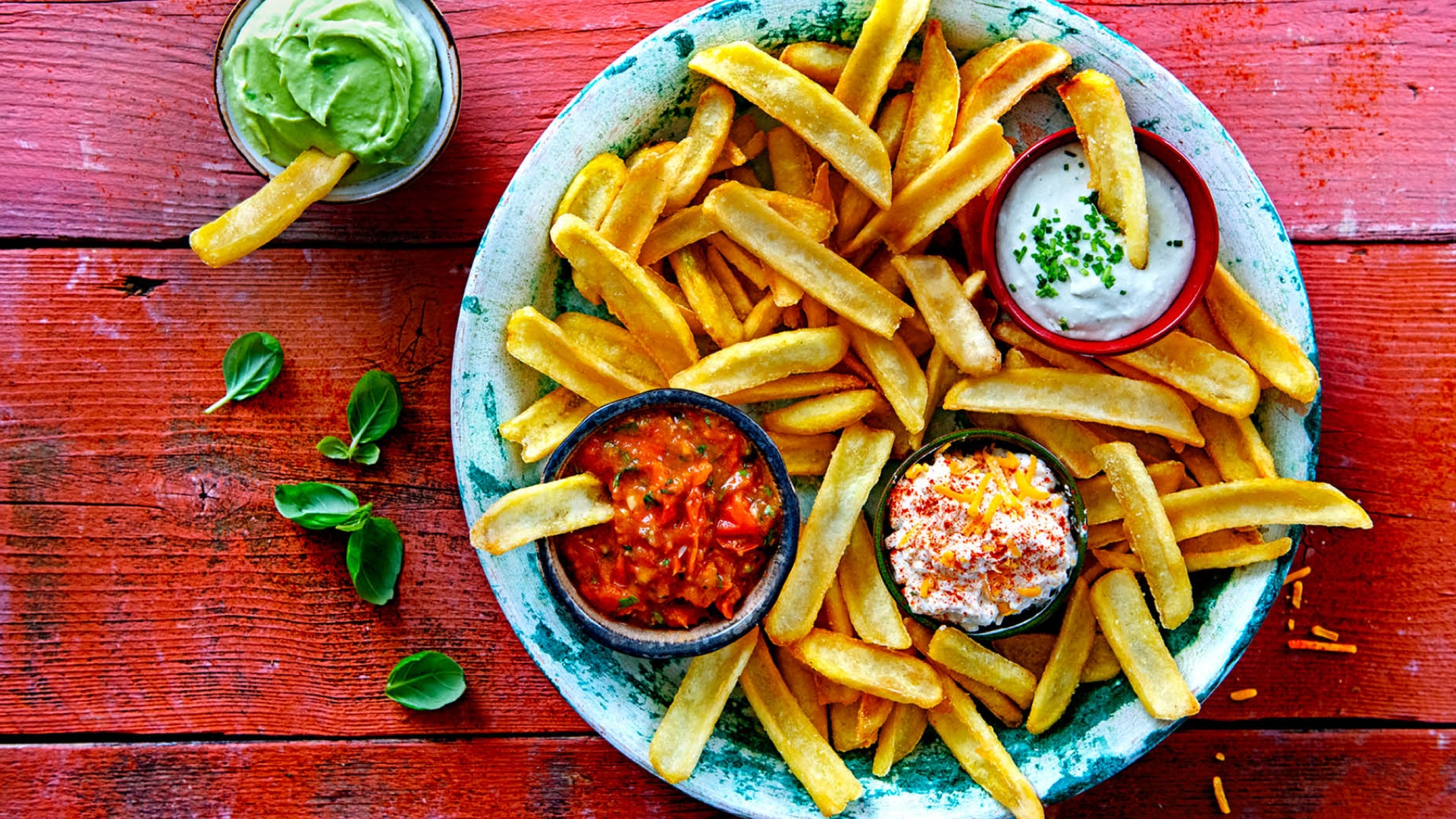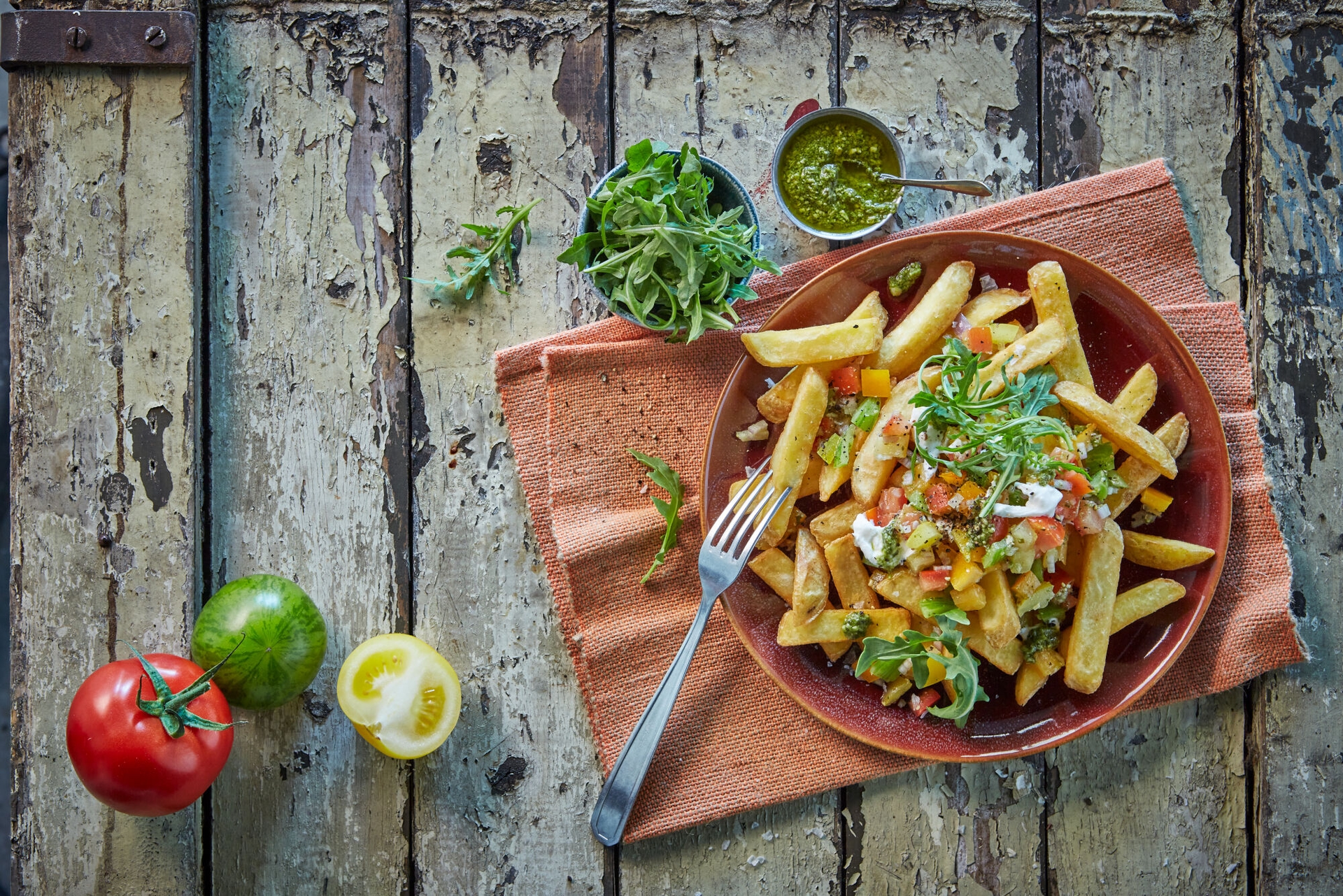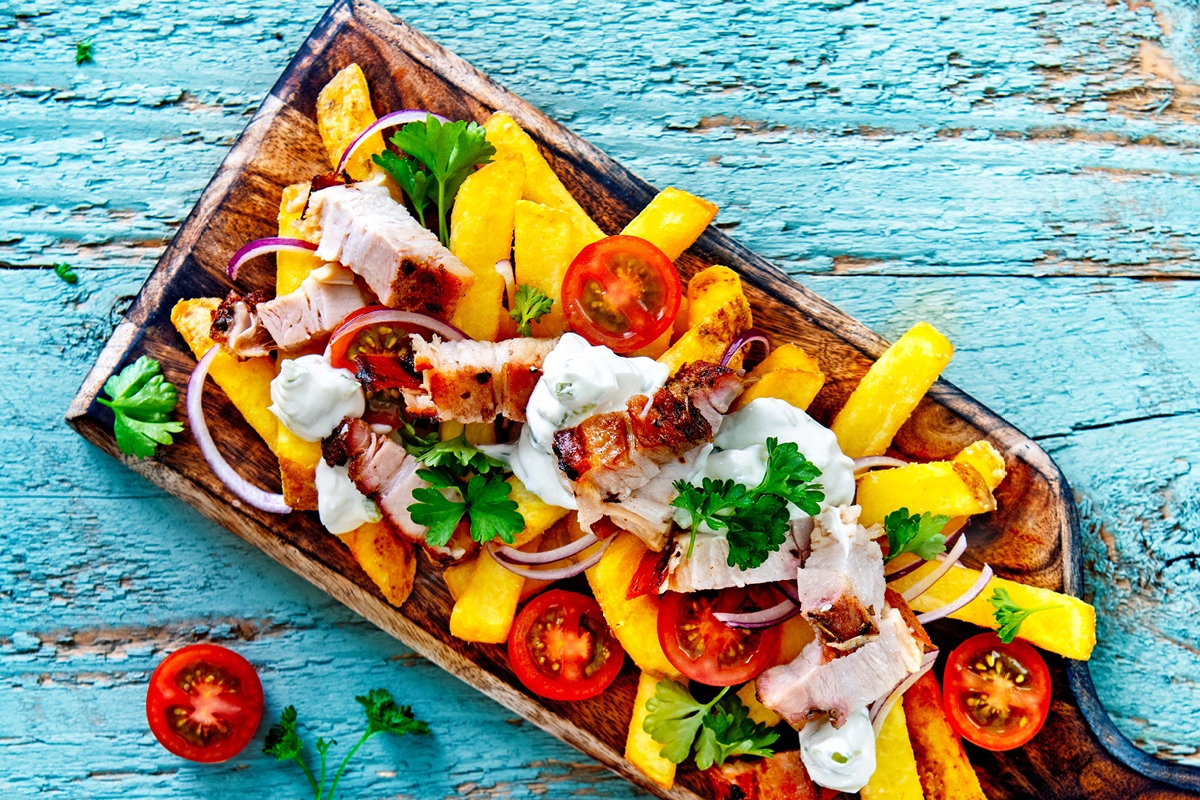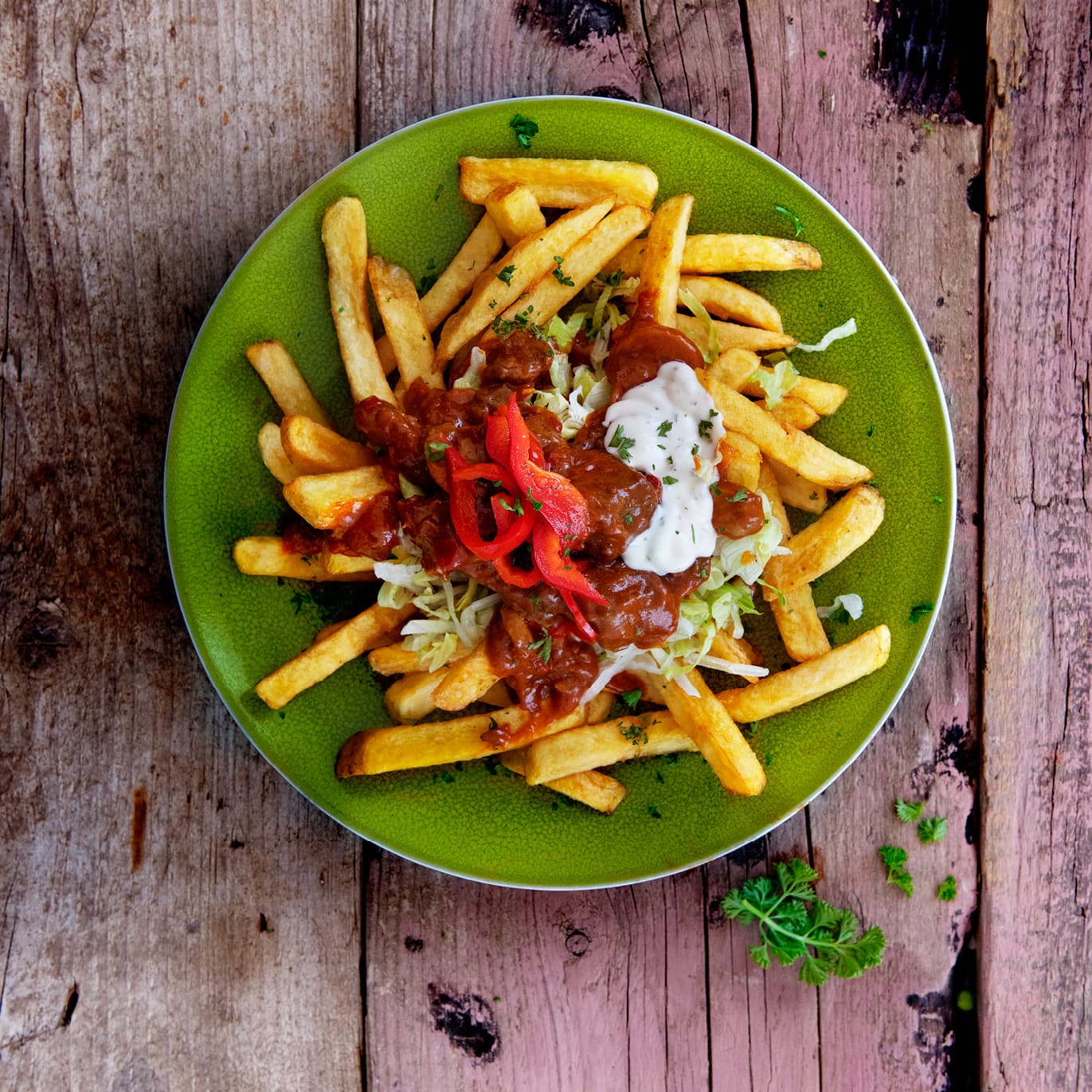
Innovative Fries: A Culinary Revolution
Fries are among the most beloved and universal dishes around the world. Their origin is attributed to Belgium, where they are traditionally double-fried in beef fat and served with mayonnaise in a distinctive paper cone. But how did these potato sticks become a staple in almost every cuisine and in so many variations? The answer lies in their versatility.
Rediscovering fries in 2025
Fries complement almost everything, allowing them to naturally adapt to local culinary traditions worldwide. From a restaurateur's perspective, they are undoubtedly one of the most popular and "safe" options for guests, even when served with exotic toppings.
What can you focus on in the coming months to turn this classic into a new sensation in your establishment?
- Explore new preparation techniques (try boiling or baking them)
- Offer alternative shapes beyond sticks (waffle fries? Curly fries? Or something entirely different?)
- Experiment with non-potato fries (use sweet potatoes, zucchini, carrots, or beets)
- Try unconventional toppings (hint: look for inspiration in Asian cuisine)
- Look for new potato varieties that store and cook better
Fries: a universal, multi-faceted favorite
What Makes Fries a "Potato Master Key" for Any Dish? First and foremost, it is their taste. Traditional deep-frying brings out the natural flavors of potatoes, while additional seasonings such as salt or a variety of sauces allow them to be tailored to individual culinary preferences.
Fries are also relatively easy to prepare, which makes them a popular choice not only in home kitchens, but also in restaurants. Their preparation is also versatile; they can be deep-fried, oven-baked, or cooked in an air fryer for a healthier option.
But the true magic of fries lies in their versatility. They can be served in countless ways. Fries can be a standalone snack, a side dish (such as burgers or meats), or even a key ingredient in more complex dishes. For example, in Canada, fries are transformed into poutine, a full dish made up of fries topped with fresh cheese curds and smothered in savory gravy. In Egypt, fries are combined with pasta, rice, and lentils as part of the popular dish koshari, often served with a variety of sauces. Further south, in Nigeria, fries become part of dodo gizzards, a dish featuring crispy fries served with sautéed chicken gizzards and eggs. This global adaptability, combined with simple preparation and universally loved flavors, is what makes fries a true culinary "master key" that fits perfectly into almost every cuisine.

When street food goes gourmet
Despite their humble beginnings, fries can achieve premium status with the right toppings, not just in fine dining, but also casual restaurants. Some places garnish fries with caviar, lemon zest, or kimchi. Truffle oil or truffle-based spices are also popular in casual dining. At high-end establishments, fresh truffles often accompany fries.
Some venues adopt the “quiet luxury” approach, enhancing fries not with luxurious toppings but by focusing on the potatoes themselves. High-starch varieties such as Yukon Gold or Maris Piper are highly sought after. Premium potatoes are sourced from organic, local farms, appealing to conscious customers and increasing the perceived value of the dish. For instance, the French restaurant L'Arpège serves fries made from their own organically grown potatoes, paired with seasonal ingredients and unique sauces.
Even molecular gastronomy techniques can elevate fries to a luxurious dish. Sous-vide cooking, multiple rounds of boiling or frying at different temperatures, and freezing between frying steps can create entirely new flavors and textures, offering guests a unique experience without costly toppings.
Sweet fries? Why not!
Although salted fries are universally loved, sweet versions can be just as delicious, either as snacks or as desserts. In countries like Brazil and Peru, fries are sprinkled with cinnamon and drizzled with honey. Sweet dips or sauces can further enhance their flavor.
A less radical take on sweet fries involves using naturally sweet vegetables such as carrots or beets, which can still complement savory dishes. Sweet fries can also be made from fruits such as apples or bananas, fried, and sprinkled with powdered sugar or cinnamon.
Fries, but make it healthier
As a fast-food legend, fries are often viewed as unhealthy, but who says they can’t be healthier? With the growing emphasis on mindful eating, vegetable fries offer a nutritious alternative to traditional potato fries.
In 2023, McDonald's France introduced a limited-edition mix of parsnip, beetroot and carrot fries. Even fine dining embraces non-potato fries. For example, Nobu, a global chain offering Japanese fusion cuisine, includes sweet potato fries with truffle mayo on its menu.

What is new in the world of fries?
The simplicity of fries makes them perfect for experimentation, and with new technologies and preparation techniques, they continue to evolve. To surprise guests in the coming year, restaurateurs can explore various options:
- Innovative preparation methods: Air fryers, for example, require minimal oil. Sous-vide cooking ensures consistent texture and flavor before frying or baking.
- Creative shapes: Spiral or waffle fries, for example, can enhance the dining experience. Shapes can also be tailored to specific dishes: waffles pair better with sauces, while spirals can hold seasonings more effectively.
- Specialized potato varieties: Different varieties impact texture and flavor. Restaurants can experiment with new breeds designed for better storage, aesthetics (fewer "eyes"), and lower starch content.
Toppings and sauces continue to evolve as well. Exotic additions such as teriyaki, ginger, or wasabi are becoming increasingly popular, offering unique culinary experiences. For example, Vleminckx in Amsterdam specializes in fries fried at three different temperatures, served with a choice of 28 globally inspired sauces.
From food stalls to culinary art: the case for fries
Fries have long transcended their modest origins to become standalone or even sophisticated dishes, adaptable to individual tastes and modern culinary trends. Their versatility allows them to shine on both paper trays and porcelain plates, impressing with creative toppings, shapes, or preparation techniques. Fries are not only a culinary classic, but also a playground for innovation, helping restaurateurs stand out from the competition and attract new customers worldwide.


